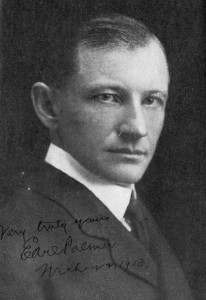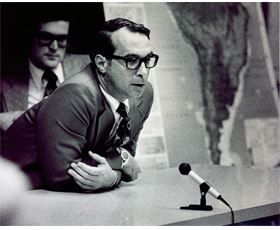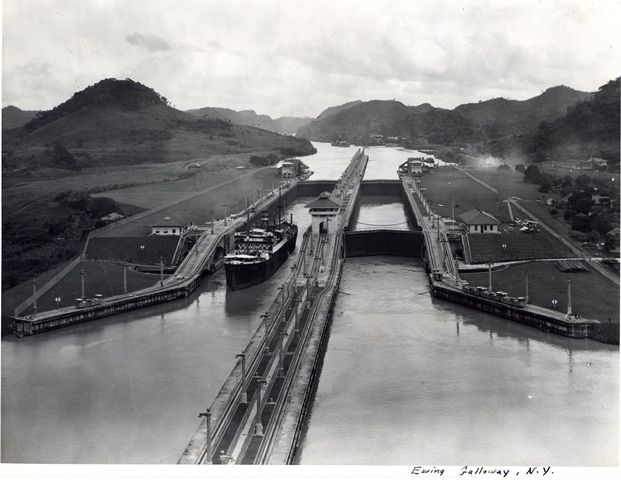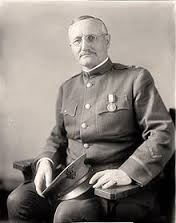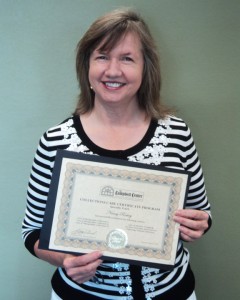 Maurice Hudson Thatcher was born in Chicago, Illinois on August 15, 1870. The Thatcher family moved to Morgantown, Kentucky when Maurice was about 3-yrs-old and he grew up in Butler County. Maurice Thatcher worked as a circuit court clerk for Butler County, before he became Assistant U. S. District Attorney for Kentucky’s Western District, 1901-1908. Thatcher held the office of State Inspector and Examiner for Kentucky, 1908-1910. In 1910, Maurice Thatcher was appointed by the former U. S. President William Howard Taft as a member of the Isthmian Canal Commission which supervised construction of the Panama Canal.
Maurice Hudson Thatcher was born in Chicago, Illinois on August 15, 1870. The Thatcher family moved to Morgantown, Kentucky when Maurice was about 3-yrs-old and he grew up in Butler County. Maurice Thatcher worked as a circuit court clerk for Butler County, before he became Assistant U. S. District Attorney for Kentucky’s Western District, 1901-1908. Thatcher held the office of State Inspector and Examiner for Kentucky, 1908-1910. In 1910, Maurice Thatcher was appointed by the former U. S. President William Howard Taft as a member of the Isthmian Canal Commission which supervised construction of the Panama Canal.
Maurice H. Thatcher served as Civil Governor of the Canal Zone, 1910-1913, during the construction of the Panama Canal. The Thatcher Ferry Bridge over the Panama Canal was named for Maurice Thatcher in 1961. Former U. S. President Robert F. Kennedy reportedly gave Maurice Thatcher the pen with which Kennedy signed the bill that named the bridge after Thatcher. However, the Thatcher Ferry bridge was later renamed as the Bridge of the Americas.
Maurice H. Thatcher served in the House of Representatives, 1923-1933, from Kentucky’s 5th District. Thatcher sponsored legislation for the establishment of Mammoth Cave as a National Park. Thatcher actively supported a national parkway system from the Great Smoky Mountains National Park through the Mammoth Cave National Park and to the Natchez Trace Parkway near Nashville, TN. Thatcher also helped establish the Gorgas Memorial Laboratory in Panama City for the study of tropical diseases in honor of his old colleague on the canal commission, Colonel William C. Gorgas.
In the House of Representatives address on May 29, 1930, the Honorable Maurice H. Thatcher concluded his speech on page 20 about the History and Significance of the Panama Canal with, “This slight ligament, which through the centuries gone has physically bound together North and South America, in the centuries to come, by the fact of its severance, shall bind and hold together the two continents in the closest bonds of commercial, political, and social friendship, and shall quicken and increase our contacts with all the lands of the earth.”
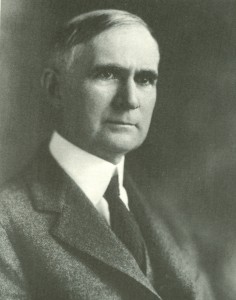 *Photo of Maurice H. Thatcher can be found in the Department of Library Special Collections.
*Photo of Maurice H. Thatcher can be found in the Department of Library Special Collections.
Thatcher was honorary life president of the Panama Canal Society in Washington, D. C. and honorary life member of the Isthmian Historical Society. Other honors include: a medal and plaque of the Order of Vasco Nunez de Balboa from the Panama government, as well as honors from Venezuela and Ecuador for his service.
Maurice H. Thatcher was the sole surviving member of the Isthmian Canal Commission when he celebrated his 100th birthday on the 56th anniversary of the opening of the Panama Canal. Former U. S. President Richard Nixon called to wish Thatcher a happy birthday.
In a newspaper article written by William Greider, February 18, 1968, entitled …Always a Congressman, Thatcher said, “I keep my citizenship back in Kentucky,” he explained, “but I am domiciled here. I stayed here because of these public matters I was interested in. I felt I could do more good by staying here and could serve Kentucky and the Panama Canal better than I would by going back.”
Maurice Hudson Thatcher died on January 6, 1973 at the age of 102 at his home in Washington, D. C. and he was buried in Frankfort, Kentucky.


